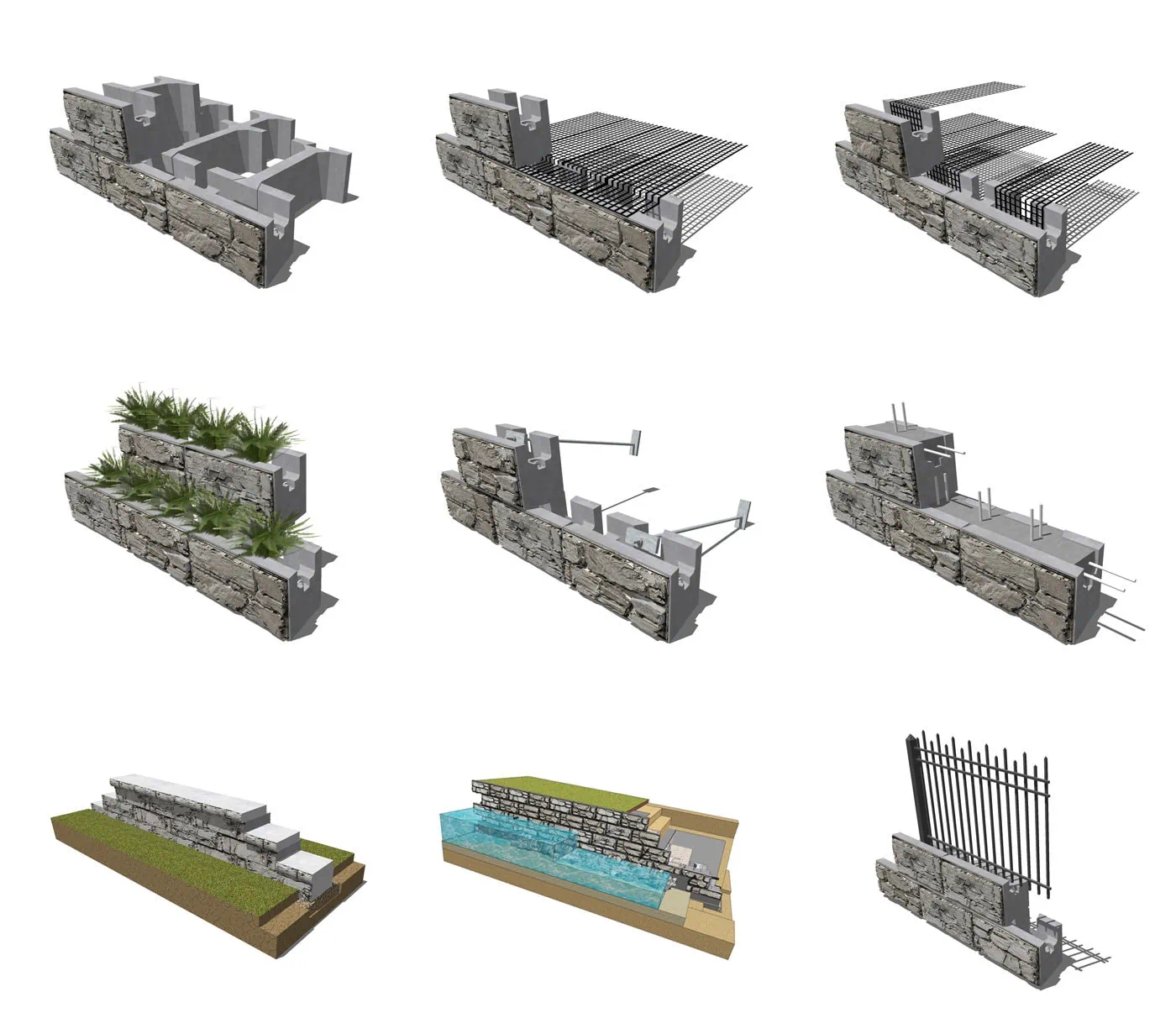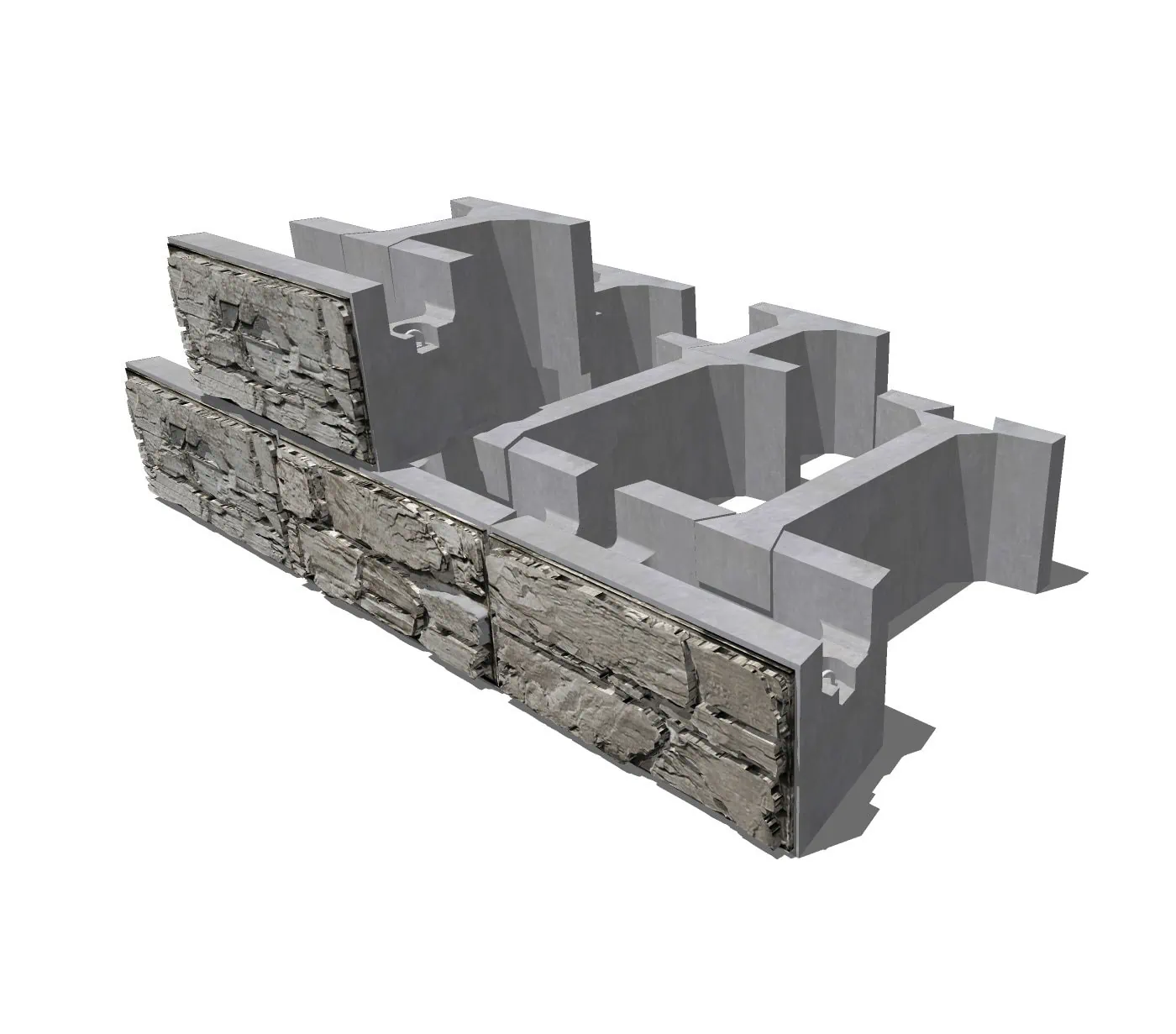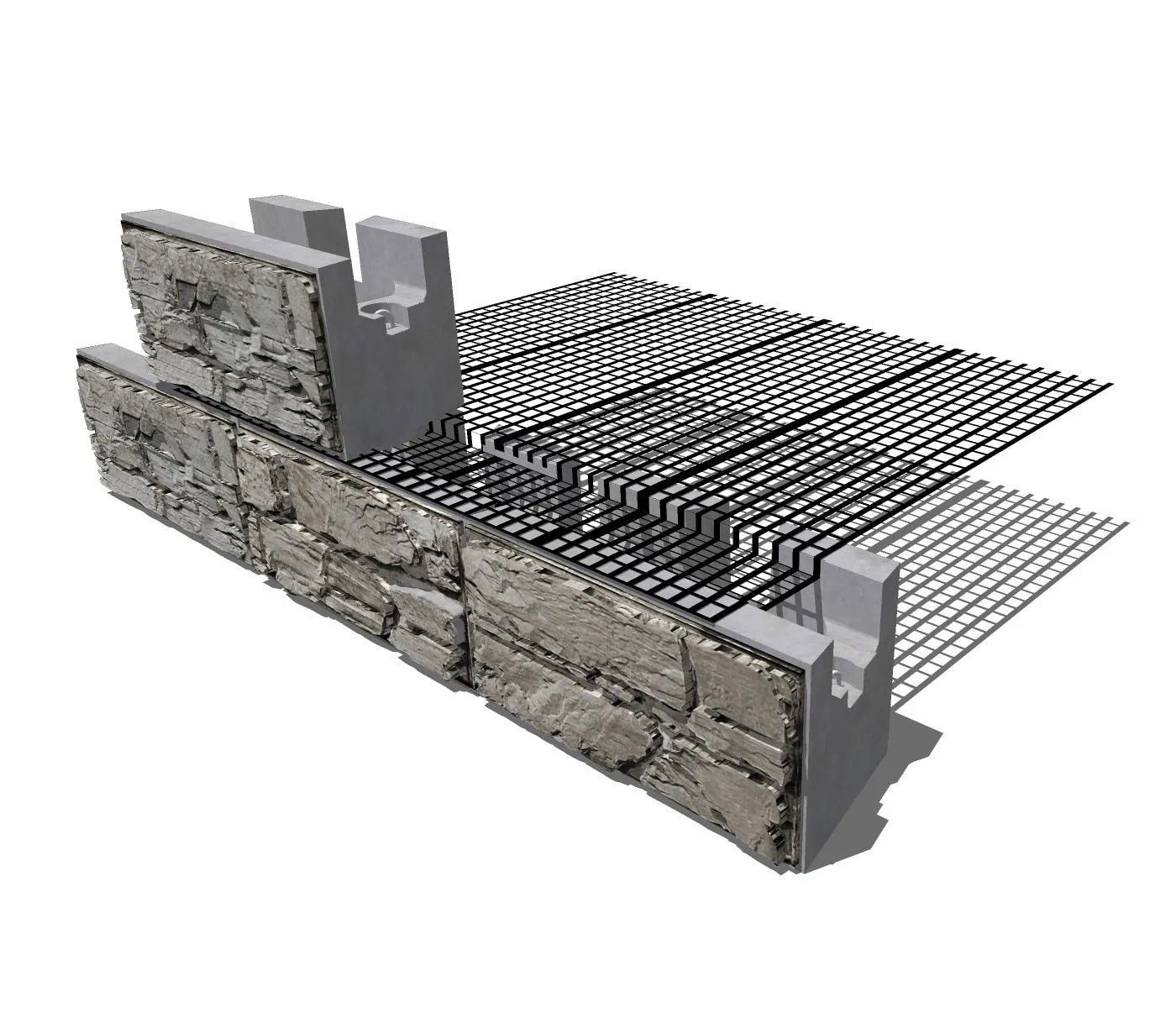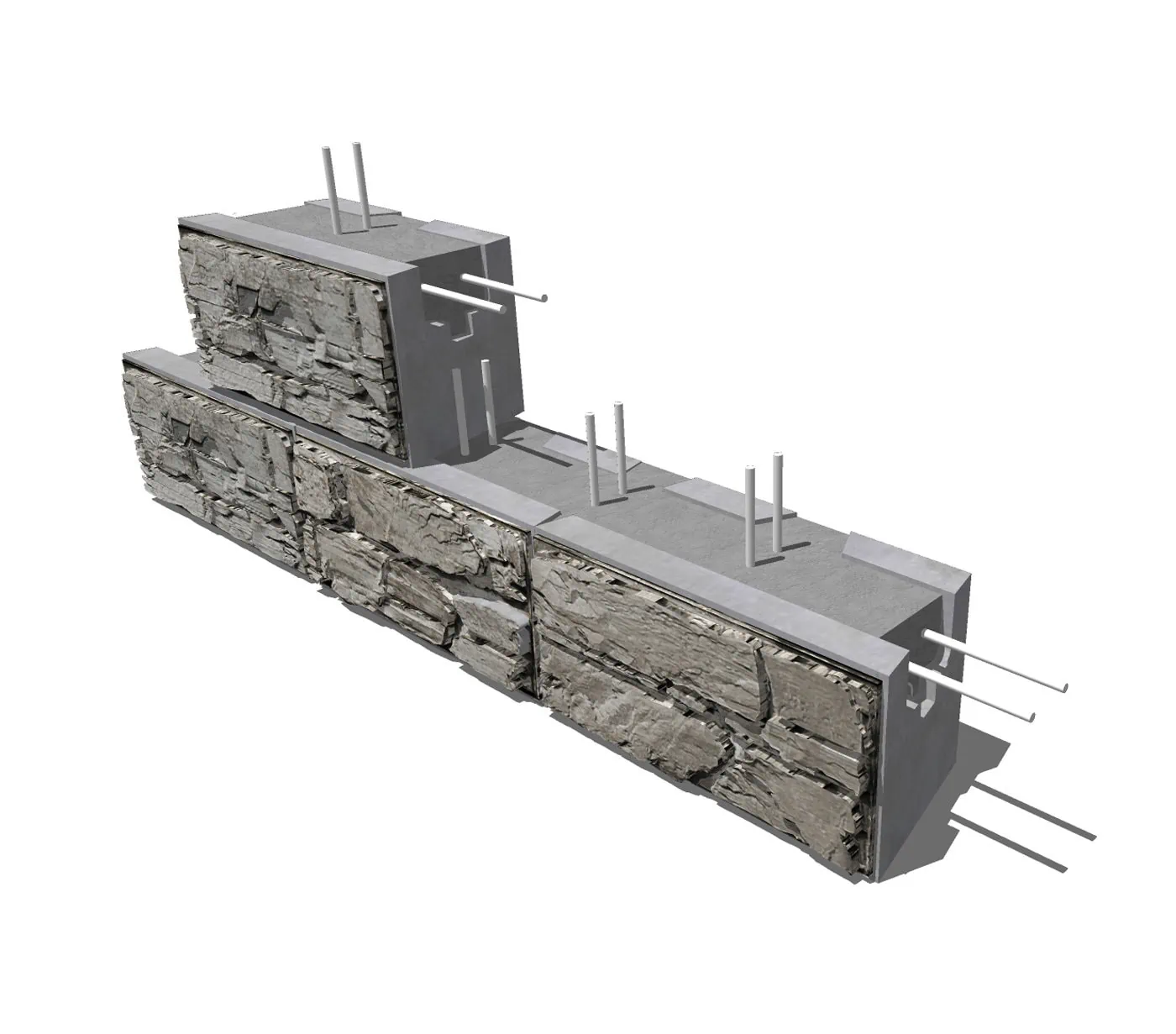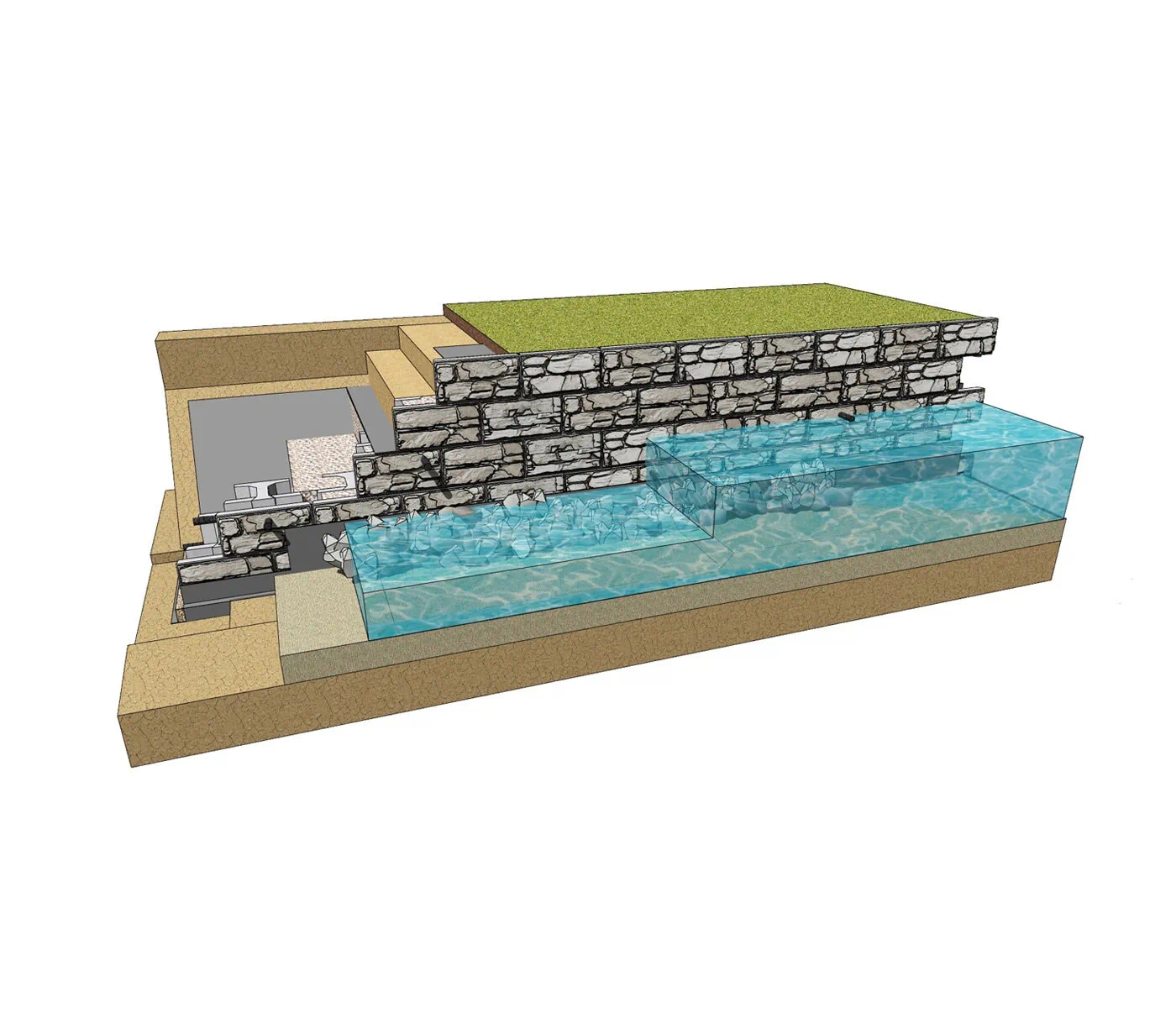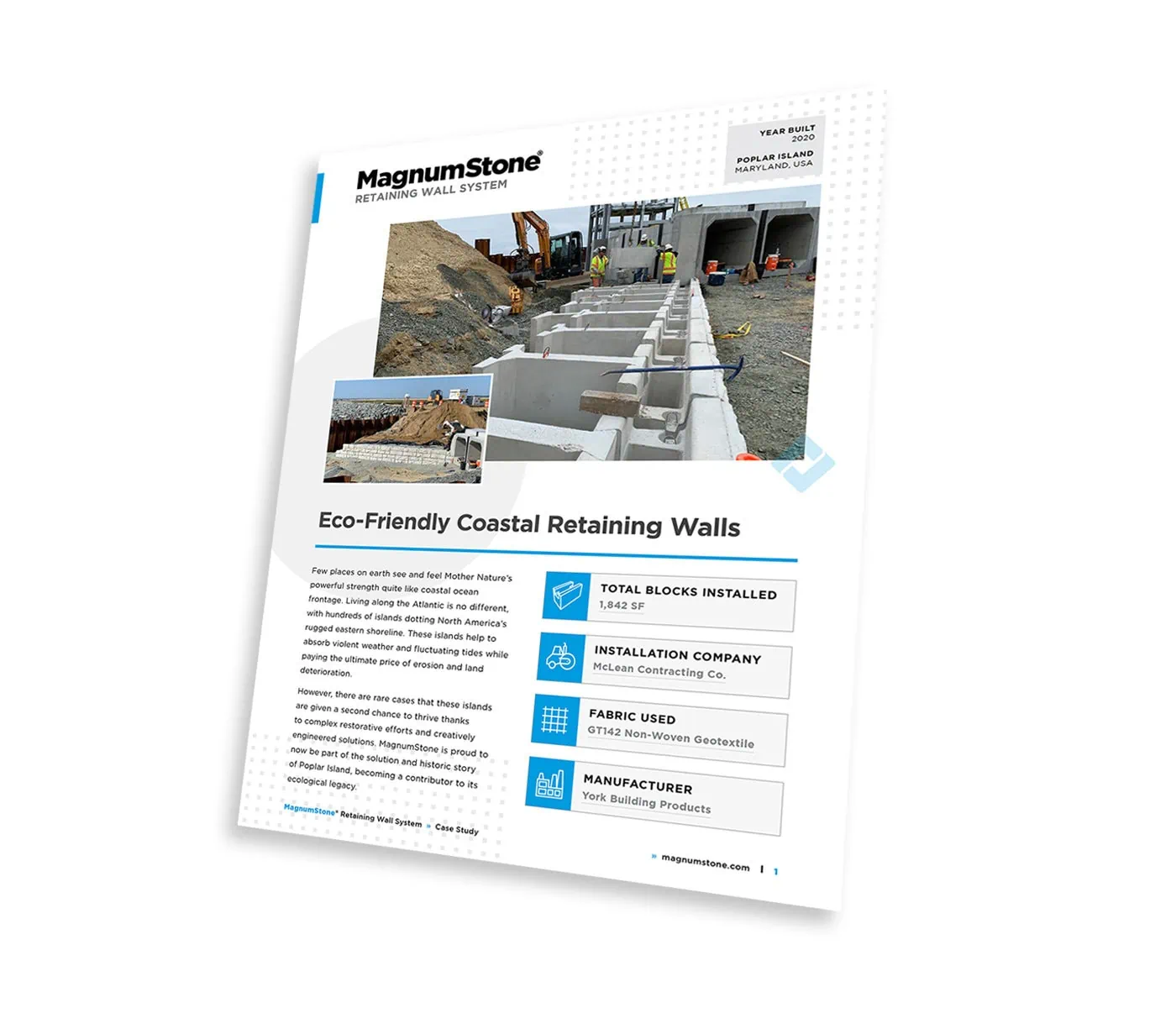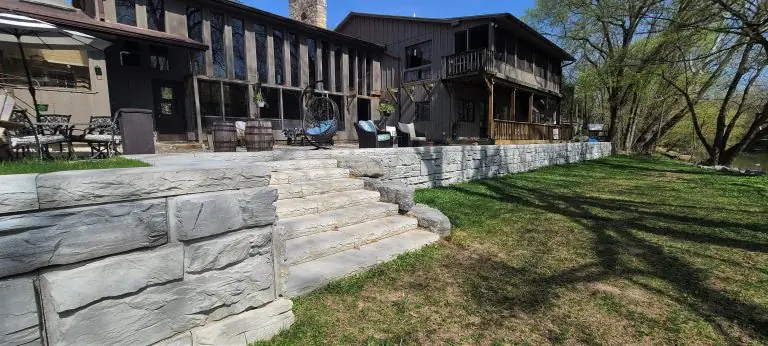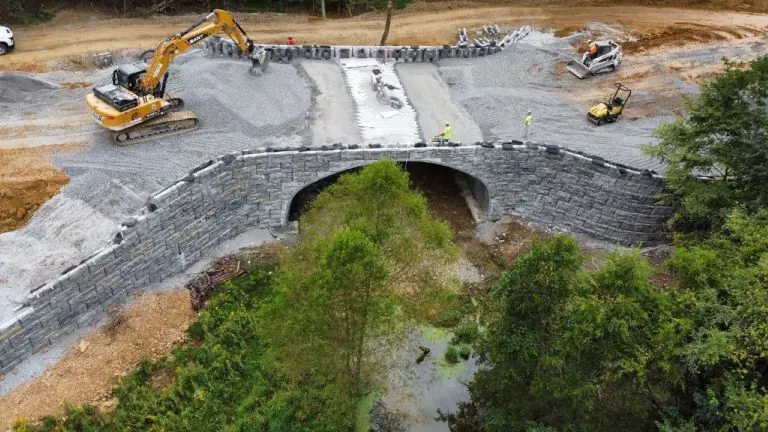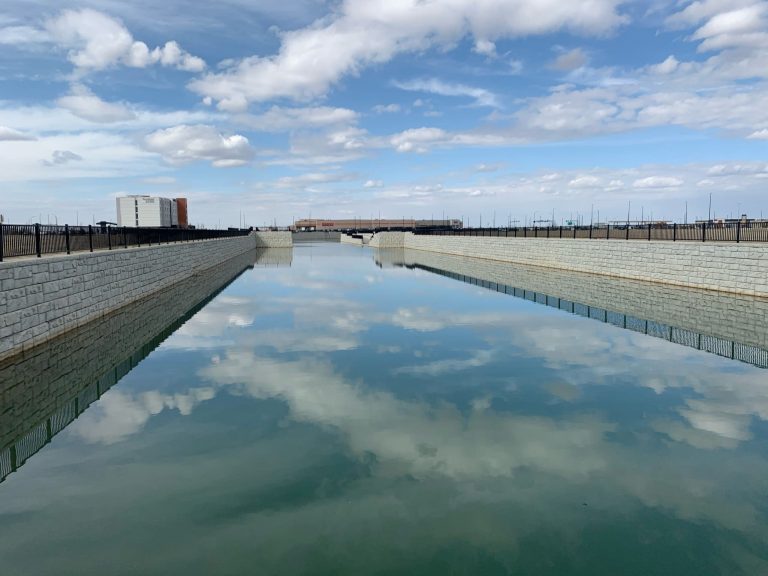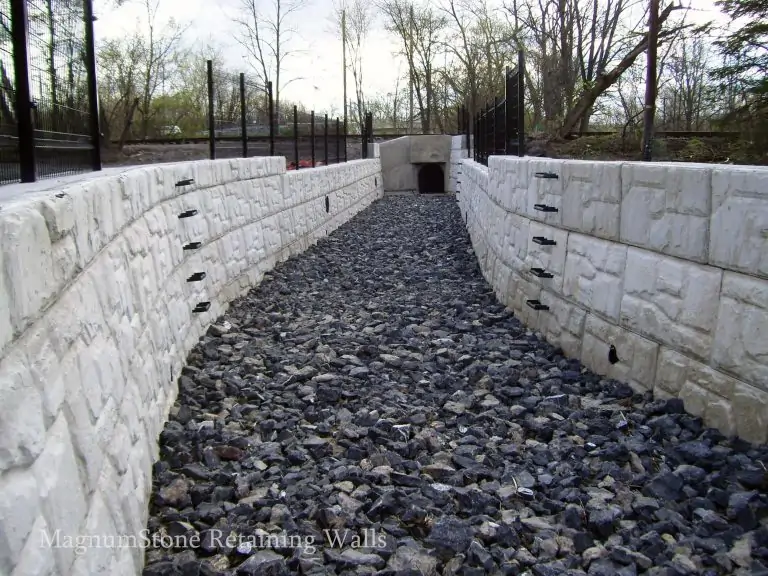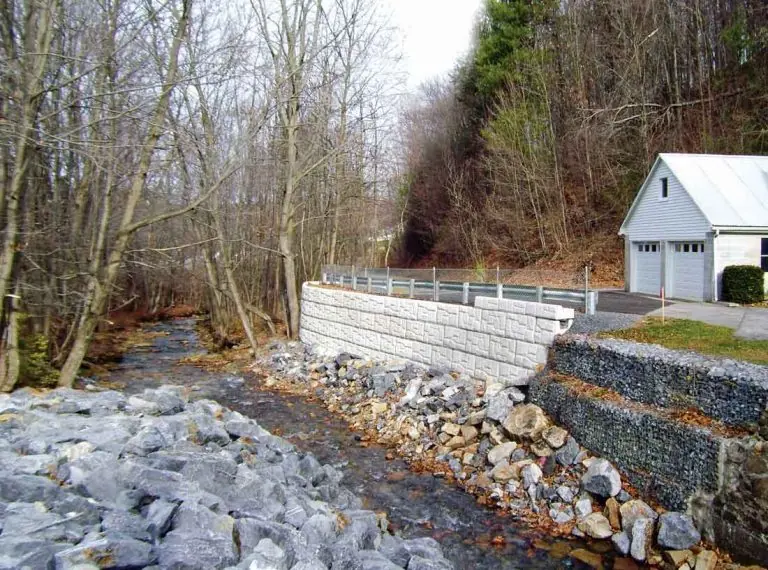Dry Ponds,
Detention
Basins &
Detention
Ponds
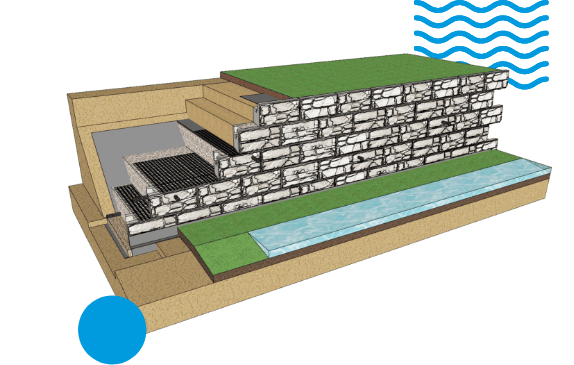
It is no secret that stormwater can have devastating effects on properties and urban areas through land erosion and flooding. After all, water is often the primary reason for structural damage and failures. To combat dangerous water accumulation from impermeable surfaces, MagnumStone retaining walls play a key role in systems that temporarily store and control stormwater runoff.
Commonly known as dry ponds, detention basins or detention ponds, these areas collect, hold and slowly release stormwater. They also perform basic filtration by collecting sediment and debris that is washed away from paved surfaces with the runoff. The stored water gradually evaporates or infiltrates into the ground below, providing a natural solution for stormwater management.
Temporary (Detention) Stormwater Management Solutions
To deal with the after-effects of wide-ranging rainfall events, temporary stormwater storage has become a critical consideration for current and future developments. Commonly known as detention basins, these systems temporarily collect, hold and remove stormwater runoff. Removal is achieved when stored water gradually infiltrates and is absorbed, is slowly released, or the water undergoes evaporation.
Detention basins are typically built with gentle side slopes, but they can be built with retaining walls on the sides. MagnumStone blocks are perfect for this application, as they can minimize the excavation area required for the retaining wall system. Saving space can be invaluable for urban areas, where space for parking or other infrastructure is a priority. If retaining walls are used, it is imperative that they can handle water containment, rapid fluctuations in water level, and are durable with low-absorption properties.
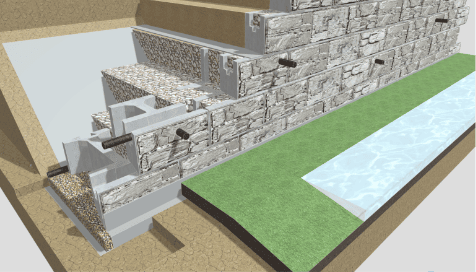
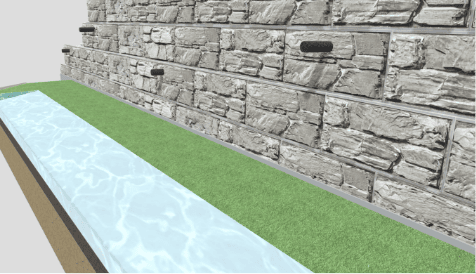
Design Considerations for Dry Pond
(Detention) Retaining Walls
-
High Water Mark – The average maximum height that a body of water is expected to reach during a period of flooding.
-
Low Water Mark – The average low water elevation that stays consistent and is typical throughout the year.
-
Rip Rap –Rip rap should be used along the toe of the walls to slow water flow, protect the wall facing, and to prevent scour. Additional scour analysis and rip rap sizing calculations should be completed separate of the wall design analysis.
-
Soils – A full soils analysis report should be prepared using boring logs to determine the suitability of the site soils. A Geotechnical Engineer should be consulted to perform the analysis and report findings.
-
Drain Gravel – Drain gravel is used in the retained infill zone or reinforced zone when using geogrids. A well draining coarse gravel (often referred to as AASHTO #57 stone) with little to no fines should be used 1 ft (304mm) above the high water mark. This material can be used inside the hollow cores of the retaining wall units and can also be used to backfill behind the wall.
-
Perforated Drainpipe – A perforated drainpipe, also known as a weeping tile, should be used for proper drainage behind the wall face. These pipes typically have a 4” (101mm) diameter and may be sock wrapped. All drainpipes may outlet (daylight) through the wall at a minimum of every 30 ft (9.0 m) on center. The elevation of the first drainpipe should be above the high water mark by a minimum of 6” (152mm). A second drainpipe should be added above the low water mark. Additional back drain(s) may be added where necessary at the discretion of the Design Engineer.
-
Filter Separation Fabric – Filter fabrics, also known as geotextile, should be used to separate the fine soils from the drainage layers. They may also be used between the backfill material and retained material along the excavation cut. Wrapping the leveling pad will assist with scour and erosion of the base leveling pad.
-
TOW – Top of retaining wall elevation. Typically, the top of the cap; shown in plan views and wall profiles and are essential for construction.
-
BOW – Bottom of retaining wall elevation. The base of the wall where the ground level meets the retaining wall; shown in plan views and wall profiles and are essential for construction.
Why Use Dry Ponds and Stormwater Detention Systems?
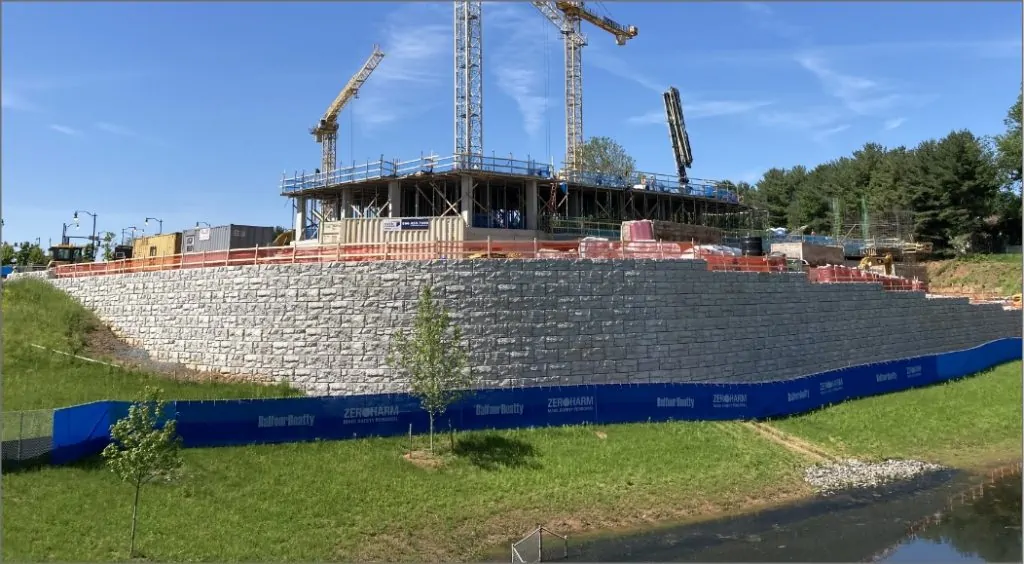
Another critical aspect is that these systems help cities, municipalities and counties reach stormwater compliance regulations and requirements. While each state, province and country has varying stormwater management and environmental protection agencies, proper planning now plays a major role in construction and development approvals. Through these systems, MagnumStone is proud to help our communities grow strong, long-lasting roots with secure stormwater management solutions.
Features & Attributes of Temporary Stormwater Storage Systems
These dry ponds and detention drainage systems all consist of similar elements which make them easy to identify. For starters, each has a small low-lying depression of land that contains, controls flow, filters and removes runoff water. Located below or at the toe of a retaining wall, dry ponds and detention areas are surrounded by graded land sloping down to the containment area.
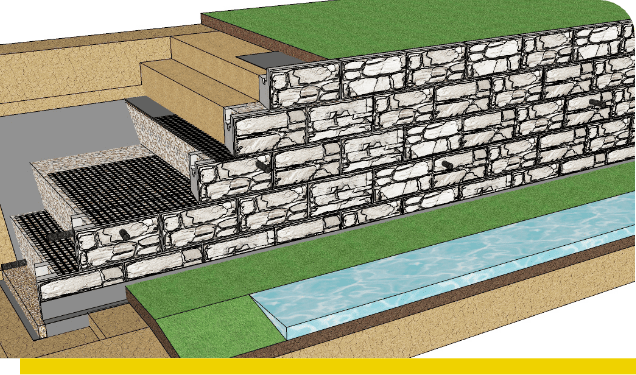
How is Water Removed from Dry Ponds?
Once stormwater enters the dry pond or detention basin’s containment area, its innate water removal process begins. Filtering the stormwater runoff comes first. These systems are engineered with layers of materials located below the unassuming grassy surface. Beneath the grass lies different tiers of stone and organic soils which promote water filtration by trapping sediment near the surface and allow the water to pass below. The filtered water gradually infiltrates the soils below after the storm passes, providing a natural and consistent water removal process.
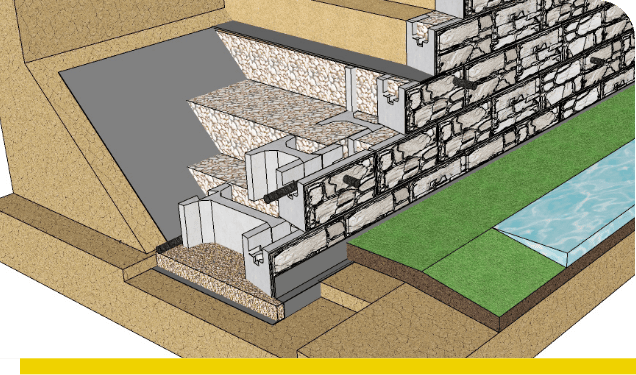
Common Applications for Dry Ponds
Dry ponds, aptly named, only become wet after a storm’s surface runoff is guided to them via drainage ditches or drainpipes. Most often they will appear dry and can serve as dual-purpose multifunctional spaces. These areas are open systems commonly disguised within natural landscapes such as parks or recreational areas. Other common locations include areas surrounding stadiums, sports fields and community amphitheatres.
While wet after rainfalls, these spots also serve as an important wildlife habitat for nearby birds and animals. Retaining walls are a vital part of stormwater infrastructure, directing and controlling water to containment areas. This is achieved via gravity and geogrid wall drainage features or terraced retaining walls which can act as step pools.
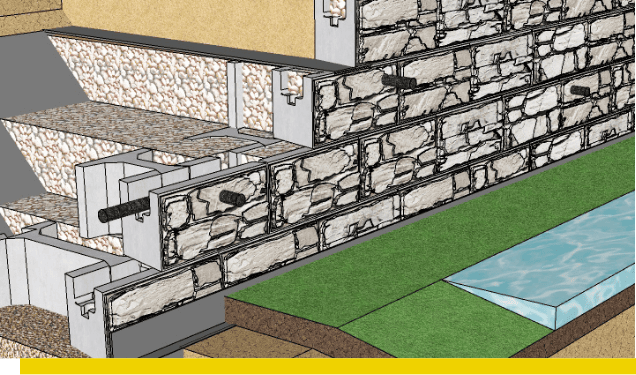
learn more about how we can help you utilize the
MagnumStone advantage!

Gravity Solution
Geogrid Solution
Load times may very depending on internet speed.
DOCUMENTS & DOWNLOADS
All related documents for this design option are listed here, or to view our entire downloads catalog click here
-
Temporary Stormwater Management Documents
-
Related Design Details
learn more about how we can help you utilize the
MagnumStone advantage!

Begin Designing Stormwater Wall Today
How to Build Stormwater Management Walls
Contact Your Local
MagnumStone Expertse
MagnuMStone Advantages
-
An eco-friendly product, the hollow core design uses 40% less concrete than solid concrete systems
-
MagnumStone units are backfilled with clear crush gravel for exceptional drainage and permeability
-
Free-flowing drainage system built into and behind the blocks, to avoid sediment buildup and blockages
-
Gravel-filled MagnumStone blocks provide weighted strength for gravity walls, or with the help of geogrid for reinforced walls
-
Natural facing rejuvenates and enhances the look of temporary stormwater storage systems
-
MagnumStone’s terraced and planter retaining walls provide environmentally friendly elements and more stylish aesthetics thanks to the block’s hollow core design
-
MagnumStone can either be used for a geogrid reinforced wall or a gravity wall for these simple or complex water applications
-
MagnumStone’s gravity extenders require far less excavation area and maximize land use
-
High-quality precast wet-cast concrete is weather-proof and minimizes water absorption
-
MagnumStone’s strength can withstand high pressures and loads of close-proximity infrastructure (parking lots, roads, railways, buildings, etc.)
-
Perforated drainpipes are strategically placed along the retaining wall to guide water runoff
-
Graded land at toe of the retaining wall diverts water runoff away from the retaining wall and promotes even water dispersion
-
Retaining walls are often embedded above or slightly below the surface of the water
-
Lightweight blocks are quick and easy to install, excellent for tight excavation spaces, making better use of land and properties
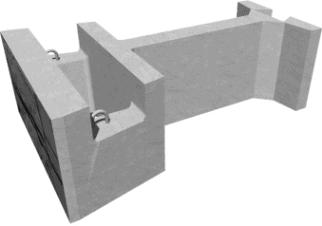

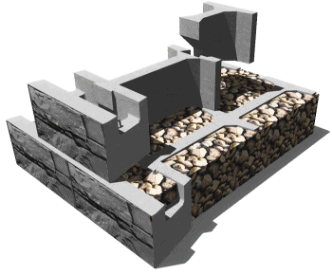
StormWater Case Studies
Every MagnumStone project has a story behind it, not just backfill and drainage channels. Our extensively library of detailed MagnumStone case studies feature impressive versatility and retaining wall successes.

